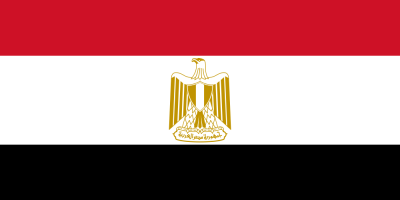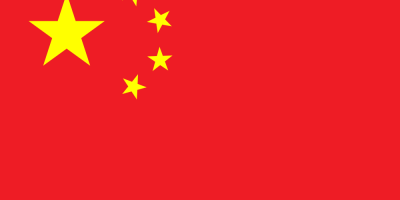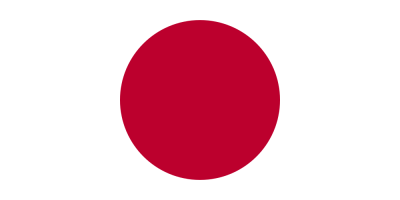Iran flag color codes features horizontal bands of green, white and red with a central emblem. If you need to match the colors of the Iranian banner for any projects or designs, having the precise Iran flag color codes is key. This article provides the hex, RGB, Pantone, HSL, CMYK, HWB and NCOL values for the green, white and red hues on the Iran flag. With this handy Iran flag color codes reference, you can accurately recreate the colors of this Middle Eastern country’s national flag in digital or print applications. Whether you need the green, white and red tones for graphic design, web development or any other use, this post gives you the specific color codes you need to faithfully render the Iran flag.
Table of Contents
What are the colors of Iran flag?
The colors of the Iran flag are:
- Green – Specifically Pantone 347 C
- White
- Red – Specifically Pantone 186 C
The Iranian flag consists of three equal horizontal bands of green, white and red. The green band is on top, the white band is in the middle, and the red band is on the bottom.
The specific shades of green and red used on the flag are defined by Pantone colors:
- Green – Pantone 347 C
- Red – Pantone 186 C
Using these precise Pantone colors ensures accurate representation of the colors when reproducing the Iranian flag.
So in summary, the three colors are green (Pantone 347 C), white, and red (Pantone 186 C).
Iran flag color codes & Color Names:
GREEN
| Color Model | Value |
|---|---|
| HTML | #007A3D |
| HEX | 00 7A 3D |
| RGB | 0 122 61 |
| PANTONE | 356 C |
| HSL | 147° 100% 24% |
| CMYK | 100% 0% 50% 52% |
| HWB | 147° 0% 52% |
| NCOL | #008438 |
WHITE
| Color Model | Value |
|---|---|
| HTML | #FFFFFF |
| HEX | FF FF FF |
| RGB | 255 255 255 |
| PANTONE | N/A |
| HSL | 0° 0% 100% |
| CMYK | 0% 0% 0% 0% |
| HWB | 0° 100% 0% |
| NCOL | #D1D5D8 |
RED
| Color Model | Value |
|---|---|
| HTML | #CE1126 |
| HEX | CE 11 26 |
| RGB | 206 17 38 |
| PANTONE | 186 C |
| HSL | 348° 85% 43% |
| CMYK | 0% 92% 82% 19% |
| HWB | 348° 19% 19% |
| NCOL | #D7141A |
What is the meaning of colors in the Iran flag?
Here are some details about the meanings of the colors on the flag of Iran:
- Green – This color has been a symbol of Islam and represents growth, happiness, and nature. On the Iranian flag, it signifies the majority Shia Muslim population.
- White – This represents peace, honesty, and neutrality. On the flag, it separates the green and red stripes.
- Red – This color symbolizes sacrifice, bravery, strength, and martyrdom. On the flag, it represents those who sacrificed their lives for Iran.
So in summary, the green represents Islam and the Muslim population, the white represents peace, and the red represents sacrifice and martyrdom. The three colors together evoke important themes of Iranian identity and values. The flag has retained the same basic elements since the 19th century, even as regimes have changed.
Explore More Flag Colors:
FAQs: Frequently Asked Questions:
Is it safe to go to Iran right now?
It is advisable to consult the travel advice provided by your government’s foreign affairs or state department, as they often provide up-to-date information on safety and security issues for travelers. Additionally, consider checking with international organizations such as the World Health Organization (WHO) for health-related information.
What is the religion in Iran?
The predominant and officially recognized religion in Iran is Shia Islam, specifically the Twelver Ja’fari school of Shia Islam. The majority of Iran’s population adheres to Shia Islam, and the country is considered the world’s largest Shia-majority state. Shia Islam became the official state religion of Iran after the Islamic Revolution in 1979.
Why Iran is important?
Here are some key aspects that contribute to Iran’s importance:
Geopolitical Location: Iran is strategically located at the crossroads of the Middle East, Central Asia, and South Asia. Its geographical location makes it a key player in regional dynamics and international geopolitics.
Energy Resources: Iran possesses significant energy resources, particularly oil and natural gas. It has one of the world’s largest proven oil reserves, and its energy exports contribute significantly to the global energy market.
Strait of Hormuz: The Strait of Hormuz, located near Iran, is a critical maritime chokepoint through which a significant portion of the world’s oil is transported. Iran’s proximity to this strategic waterway gives it influence over global energy supply routes.
Cultural and Historical Heritage: Iran has a rich cultural and historical heritage that spans thousands of years. It is home to ancient civilizations, historical landmarks, and a vibrant cultural legacy that includes literature, art, and architecture.
What is Iran famous for producing?
Some of the key products for which Iran is famous include:
Oil and Petroleum Products: Iran possesses significant reserves of oil and natural gas. The country is a major producer and exporter of crude oil, refined petroleum products, and natural gas.
Petrochemicals: Iran has a well-developed petrochemical industry, producing various chemical products derived from petroleum. These include polymers, fertilizers, solvents, and other chemical compounds.
Carpet and Rug Industry: Iran has a long and renowned tradition of carpet weaving. Persian carpets, known for their intricate designs and high quality, are highly sought after globally. Cities like Tabriz, Isfahan, and Kashan are known for their carpet production.
Minerals and Mining: Iran is rich in mineral resources, including copper, iron ore, coal, zinc, and chromite. The mining sector plays a crucial role in the country’s economy.
Steel and Metal Industries: Iran has a well-developed steel industry, producing a variety of steel and metal products for domestic use and export.
Automobile Manufacturing: Iran has a domestic automotive industry that produces cars and commercial vehicles. Some Iranian-made cars are also exported to other countries.
Agricultural Products: Iran is known for its agricultural production, including wheat, barley, rice, fruits, nuts, and vegetables. The country is self-sufficient in the production of many agricultural commodities.
Dates: Iran is a major producer of dates, particularly varieties such as Mazafati and Piarom. Iranian dates are known for their sweetness and quality.
Is Tehran Safe?
here are some general safety tips for travelers to Tehran or any other city:
Stay Informed: Keep yourself updated on the latest news and developments in the region. Check for any travel advisories or alerts issued by your government.
Respect Local Customs: Iran has its own cultural norms and customs. Respecting local traditions and regulations is essential for a positive and safe experience.
Be Mindful of Political Situations: Stay informed about any political developments that might affect the region. Political events can impact the overall safety of an area.
Health Precautions: Be aware of health recommendations, especially in the context of the global situation. Follow any guidelines related to public health and safety.
Use Reliable Transportation: Choose reputable transportation options and be cautious when using public transportation. Familiarize yourself with local routes and transportation systems.
Secure Your Belongings: Take standard precautions to secure your belongings and be vigilant in crowded places. Avoid displaying valuable items openly.
Communicate with Locals: Engage with locals and seek advice on safe areas, activities, and places to visit. Local insights can provide valuable information.
What is the most famous thing in Iran?
some of the most renowned aspects of Iran include:
Persepolis: Persepolis is an ancient city and archaeological site that was the capital of the Achaemenid Empire. The ruins of Persepolis are UNESCO World Heritage-listed and attract visitors interested in ancient Persian history and architecture.
Isfahan’s Naqsh-e Jahan Square: Also known as Imam Square, this square in Isfahan is one of the largest in the world. It is surrounded by historical buildings, including the Imam Mosque, Sheikh Lotfollah Mosque, Ali Qapu Palace, and the Qeysarie Gate.
Shiraz and the Gardens of Eram: Shiraz is known for its rich cultural heritage and beautiful gardens. The Eram Garden, a UNESCO World Heritage site, is particularly famous for its layout and design.
Golestan Palace: Located in Tehran, Golestan Palace is a historic complex that includes royal buildings and gardens. It is a UNESCO World Heritage site and showcases Persian art and architecture.
Iranian Carpets: Persian carpets, also known as Iranian carpets, are renowned worldwide for their intricate designs and quality craftsmanship. Each region in Iran often has its own distinct style of carpet weaving.
Chogha Zanbil: An ancient ziggurat located near Susa, Chogha Zanbil is one of the few existing ziggurats outside of Mesopotamia. It is a UNESCO World Heritage site.
Nasir al-Mulk Mosque: Located in Shiraz, this mosque is known for its stunning stained glass windows that create a vibrant display of colors when sunlight filters through.
What is Iran’s currency?
official currency of Iran is the Iranian Rial (IRR). The symbol for the Iranian Rial is “﷼,” and its ISO code is “IRR.”
What is Iran biggest export?
Iran’s largest export is typically petroleum and petroleum-based products. The country possesses vast oil reserves and is a significant player in the global oil market. Iran’s economy heavily relies on oil exports, which include crude oil as well as refined petroleum products.
What food is grown in Iran?
Some of the key foods grown in Iran include:
Wheat: Iran is one of the world’s leading producers of wheat. Bread, a staple in the Iranian diet, is often made from wheat flour.
Barley: Barley is grown for various purposes, including use as animal feed and in the production of traditional dishes.
Rice: Rice is a significant crop in Iran, and various rice varieties are cultivated. It is a staple in Iranian cuisine, with dishes like Chelo (steamed rice) being widely consumed.
Fruits: Iran is known for the cultivation of a variety of fruits, including pomegranates, dates, figs, grapes, apples, apricots, and citrus fruits.
Vegetables: Commonly grown vegetables in Iran include tomatoes, cucumbers, onions, garlic, eggplants, bell peppers, and various leafy greens.













